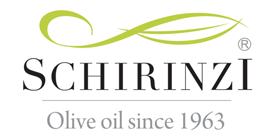Cold pressing olives in the Oil Company Schirinzi in Salento
Advanced oil mill in a continuous cycle
The activity of squeezing olives are in the oil plants expanded and modernized in 2005, with a production capacity of 500 tons of olives to 8 hours, which corresponds to a production of about 100 tons of olive oil every 8 hours. The one used by our company is an advanced oil mill in a continuous cycle of type Pieralisi.
The olives, procured daily in the mill, are pressed with continuous cycle plants at a controlled temperature, thus obtaining an oil cold-pressed from olives sensory characteristics authentic and absolutely unaffected.
The company also performs services for hire or reward for pressing olive oil producers customers from neighboring countries.
Phases of pressing olives
The cycle of pressing olives, carried out in continuous, comprises the following steps:
Discharge the olives
The process begins with the unloading of the olives in a discharge hopper, located beneath the floor so as to facilitate the operation.
From here, the olives are transferred by a conveyor in an amount well dosed, the surface of the tape has the strips positioned in a “herringbone” that allow on it the permanence of the fruit during the transfer.
On top of the tape is placed an aspirator defoliating which has the function of separating the fruit from foreign bodies light (leaves, twigs, etc..) That will be forced out by the processing cycle unlike the olives that come to fall into the washing machines;
Washing of the olives
The olives go in washing machines running water, where shuffled and shaken by the force of wire air from the fund provision is made for cleaning and the removal of topsoil.
The olives are well separated from any gravel, are transported by flowing water force in a second hopper through a grid that retains any leaves still present.
Crushing and kneading
From the second hopper the fruit is transported, by means of screw elevators in crushers for the appropriate crushing, the crushed olives in the form of pulp oil that is subjected to stirring (20-30 minutes) to facilitate the rupture of the membranes of cells oleifere , and to homogenize.
This phase is called kneading and kneading is performed by machines, they have a cylindrical shape
and in their interspace circulates hot water that allows the heating of the pulp oil to facilitate the extraction of oil. Our kneading allow to perform their functions at a controlled temperature, thus obtaining an oil “for cold extraction” seen that the temperature of the pulp oil is maintained at below 27 ° C.
Pressing olives and decanting
The kneaded paste is sent to said centrifuge extractors or Dekanter, the transfer takes place through progressive cavity pumps that have the characteristic to ensure the provision of a stable amount of pulp oil extractor. In the action of the centrifugal force extractors are immediately separate the oil, water, vegetation and residue;
the oil must obtained by pressing olives centrifuge is first filtered vibrant baskets to release any residual residue, and is then
sent via pumps to a particular centrifugal separator to be freed from water droplets yet.
The product obtained is subjected to processes of natural sedimentation, resulting in a non-filtered oil, which gives it a slight haze to guarantee quality and authenticity, preserving taste and sensations typical of the fruit absolutely unmistakable. After the step of pressing olives and the settling of the oil that can last several months, the product can be started at the packaging stage olive oil for sale.










